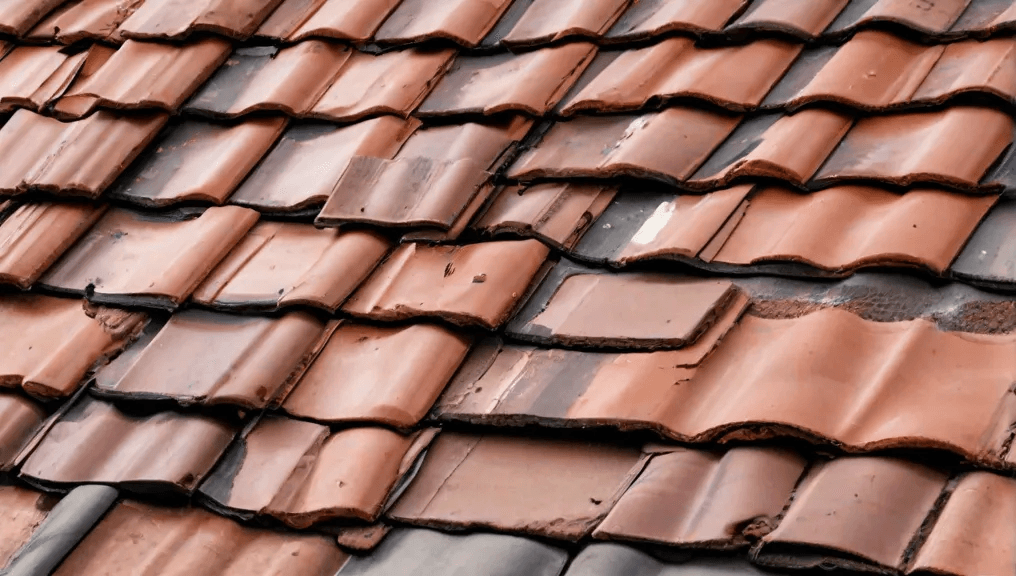Roof treatment involves a variety of methods designed to protect and enhance the durability of your roof against weather changes, UV rays, algae, moss, and lichen. By using coatings, sealants, and chemical treatments, homeowners can prolong their roof’s lifespan and prevent costly repairs. Learn about the importance of timely roof treatment, the benefits of DIY vs professional services, and essential post-treatment maintenance tips to ensure your roof remains in optimal condition.
Introduction to Roof Treatment
Roof treatment encompasses a range of methods designed to maintain and enhance the durability of a roof. These treatments aim to protect roofing materials from the adverse effects of weather changes, harsh UV rays, algae, moss, and lichen growth. Proper roof care significantly prolongs the lifespan of the roof by creating a barrier against detrimental elements that can cause deterioration over time.

Weather variations, such as extreme heat, heavy rainfall, and accumulated snow, can weaken roofing materials, leading to cracking, warping, or even leaks. Similarly, the growth of algae, moss, and lichen not only mars the aesthetic appeal of a roof but also causes structural damage by trapping moisture and promoting decay. Roof treatments help prevent these issues by applying protective coatings or cleaning solutions that inhibit organic growth and reinforce the roof’s resilience under changing weather conditions.
Read this article and do not forget to check our YouTube channel “Grig Stamate” for tones of amazing videos:
https://www.youtube.com/@GrigStamate
House Tours, #23 – Small Family Homes with Comfortable Interiors (video)
One of the pivotal benefits of roof treatments is the long-term financial advantage they offer homeowners and property managers. By investing in regular roof maintenance, which includes appropriate treatments, the need for costly repairs or premature roof replacement is significantly reduced. This proactive approach not only ensures the structural integrity of the roof but also translates into considerable savings over time. Additionally, a well-maintained roof contributes to the overall property value, presenting a better return on investment.
In essence, roof treatment is an essential component of any comprehensive home maintenance plan. It blends preventive measures with cost-efficiency, safeguarding the roof from environmental aggressors while offering financial prudence to property owners. Whether it’s through professional services or DIY options, integrating roof treatments into regular maintenance routines is a prudent step towards ensuring the longevity and durability of one’s roofing system.
When it comes to increasing the lifespan of a roof, there are several types of roof treatments available that cater to different materials and conditions. Knowing the appropriate treatment for your roofing can significantly enhance its durability and performance. Below, we explore the primary treatments such as coatings, sealants, and chemical treatments.
Coatings
Roof coatings are liquid-applied, monolithic membranes designed to protect and extend the life of roofing systems. They are particularly effective for flat or low-slope roofs. Silicone, acrylic, and polyurethane are common types of coatings. Silicone coatings offer excellent UV stability and water resistance, making them ideal for areas with high exposure to sunlight and moisture. Acrylic coatings provide good reflectivity and environmental benefits due to their water-based formulation, while polyurethane coatings are known for their abrasion resistance. Despite their benefits, coatings can be less effective on heavily damaged roofs and may require reapplication every few years.
Sealants
Sealants are used to fill gaps, cracks, and joints on the roof, preventing water infiltration and enhancing the roof’s waterproof properties. Ideal for various roofing materials including shingles, metal, and concrete, sealants come in forms like silicone, polyurethane, and bitumen. Silicone sealants provide flexibility and durability, whereas polyurethane sealants exhibit high tensile strength, making them suitable for regions with extreme weather variations. Bitumen-based sealants are effective for asphalt and gravel roofs. While highly efficient in preventing leaks, sealants might lose efficacy over time due to UV degradation and thermal expansion.
Chemical Treatments
Chemical treatments primarily include fungicides and algaecides, which are critical in preventing organisms like moss, algae, and lichens from compromising roof integrity. These treatments are particularly useful for shingles and tile roofs situated in humid environments. Regular application can prevent water retention and subsequent degradation of roofing materials. Nevertheless, chemical treatments may need to be reapplied periodically and can sometimes pose environmental concerns depending on the chemicals used.
Understanding the different roof treatments can help homeowners and professionals make informed decisions tailor-fitted to their roofing needs, ensuring longevity and sustained performance.
Identifying the Right Time for Roof Treatment
Determining the appropriate time to initiate a roof treatment is crucial in extending the lifespan of your roof. Timely interventions can prevent minor issues from escalating into significant damages, thus safeguarding the structural integrity of your home. Several indicators can signal the need for a roof treatment, and understanding these signs is imperative for effective roof maintenance.
Visible wear and tear are often the most obvious indicators that your roof requires attention. Look for shingles that are curling, cracked, or missing. These signs of deterioration suggest that your roof’s protective barrier is compromised, necessitating immediate treatment to prevent water infiltration and further damage. Additionally, granules in gutters are a telltale sign of asphalt shingle wear.
Moss growth on your roof is another significant indicator. Moss retains moisture, which can lead to serious damage over time, especially in climates with high humidity. Regular inspection and removal of moss can prevent the need for more extensive repairs or replacements. Consider eco-friendly roof treatments that inhibit moss growth and preserve the roofing material.
Leakage is a critical signal that cannot be ignored. Water stains on ceilings or walls indicate that your roof’s waterproofing capabilities are faltering. Immediate intervention with a roof treatment can mitigate further water damage and maintain the roof’s integrity. Check the attic for signs of light penetration through the roof, as these gaps can lead to leaks.
The influence of climate and environment on the timeline for roof treatment cannot be overstated. Homes situated in regions with extreme weather conditions, such as heavy snowfall, intense UV radiation, or high winds, may require more frequent inspections and treatments. Similarly, areas surrounded by trees may see accelerated roof wear due to debris accumulation and organic growth. Tailoring your roof maintenance schedule to local environmental factors ensures optimal roof performance and longevity.
Increasing the lifespan of your roof significantly depends on choosing the right roof treatment. The selection process must take into account various critical factors including the type of roof material, the age of the roof, and the environmental conditions specific to your location. Understanding these elements ensures that the treatment you opt for will effectively protect and sustain the roof’s integrity over time.
Factors to Consider
Roof Material: Different roofing materials—such as asphalt shingles, metal, tile, or wood—react differently to treatments. For instance, asphalt shingles benefit from treatments that enhance waterproofing and UV protection, whereas metal roofs may require anti-rust coatings. It’s essential to use a treatment specifically designed for your roof material to avoid damage and maximize benefits.
Age of the Roof: An older roof may require more intensive treatments to restore its condition, including sealing cracks or adding layers of protective coatings. Conversely, newer roofs may benefit from lighter treatments that focus on prevention. It’s critical to assess the roof’s current state to determine the degree of treatment needed.
Local Climate: Environmental conditions play a pivotal role in your selection. In areas with heavy rainfall, treatments that enhance water resistance and prevent mold or moss growth are most effective. For regions with intense sunlight, UV-resistant products can protect the roof from degradation and extend its life span. Additionally, areas prone to snow will benefit from treatments that prevent ice dam formation.
Comparing Products
Several products cater to different needs. For asphalt shingles, products like GacoRoof and Roof Reviver offer waterproofing and UV protection. Metal roofs benefit from Kool Seal Premium and Rust-Oleum, which provide excellent anti-corrosive properties. Tile roof treatments such as Tile Shield deliver protective barriers against weather elements. Each product’s efficacy varies, and professional consultation can aid in choosing the most suitable one for your specific requirements.
In sum, examining your roof’s material, age, and local climate conditions, paired with a comparison of available products, forms the cornerstone of selecting the most appropriate roof treatment. With a careful and informed choice, you can enhance the durability and longevity of your roof significantly.
DIY vs Professional Roof Treatment
Maintaining the longevity of your roof often involves making a crucial decision: whether to undertake the project yourself or hire professionals. Each option has its unique advantages and potential drawbacks, necessitating careful consideration before proceeding.
Engaging in a DIY roof treatment can be an appealing choice for homeowners looking to save money. With an array of readily available roofing products, many find DIY to be a cost-effective solution. However, it’s essential to consider the necessary skills, tools, and materials required for effective roof treatment. Homeowners should possess a fundamental understanding of roofing systems, as well as proficiency in using tools such as pressure washers and sealants. Additionally, safety gear like harnesses and non-slip footwear are vital to prevent accidents during the process.
Nonetheless, DIY roof treatment is not without its challenges. Misapplication of materials or insufficient preparation can lead to suboptimal results and potential structural damage. Incorrectly treated roofs may also void existing warranties, resulting in additional expenses down the line. Furthermore, navigation of the roof can be inherently hazardous, particularly for those lacking experience, increasing the risk of injury.
On the other hand, opting for professional roof treatment offers numerous advantages. Roofing professionals bring a wealth of expertise, ensuring that materials are applied correctly and efficiently. Their extensive knowledge base often includes access to high-quality, specialized products not available to the general public. Moreover, professional services come equipped with advanced tools and equipment, facilitating superior, long-lasting results.
Safety considerations further underscore the benefits of hiring experts. Trained professionals adhere to stringent safety protocols, substantially reducing the likelihood of accidents. Although professional treatment may seem costly initially, the investment often translates into long-term savings by preventing costly repairs and extending the roof’s lifespan.
In conclusion, the decision between DIY and professional roof treatment hinges on individual circumstances, including budget, expertise, and personal safety. While DIY can be budget-friendly and fulfilling for some, professional services offer unmatched quality, safety, and peace of mind, ensuring the optimal preservation of your roof’s integrity.
Step-by-Step Guide to Roof Treatment Application
Applying a roof treatment properly can significantly extend the lifespan of your roof. The first step in this process involves thorough preparation. Begin by cleaning the entire roof surface, which ensures that the treatment adheres effectively. Utilize a broom or leaf blower to remove debris, followed by a power washer for deeper cleaning. Allow the roof to dry completely before proceeding.
Selecting the optimal weather conditions for treatment application is pivotal. Aim for a day that is dry and relatively mild in temperature—temperatures between 50°F and 85°F are ideal. Avoid days with high wind or rain forecasted within 24 hours post-treatment, as these can adversely affect the application process and results.
Safety measures should never be compromised. Equip yourself with non-slip shoes, a safety harness, gloves, and eye protection. Additionally, placing guardrails around the perimeter of the roof can further enhance safety while also providing stability during the application process.
The application process varies depending on the type of treatment being used: fungicide, anti-moss, or a protective coating. For fungicides and anti-moss treatments, a garden sprayer can be utilized for an even distribution. Begin at the roof peak and work your way down in overlapping sections to ensure comprehensive coverage. When applying a protective coating, use a brush or roller specifically designed for roof applications. Apply it uniformly, beginning from the top and working towards the eaves.
Post-application, it’s crucial to follow manufacturer-specific guidelines regarding drying times and any subsequent treatment application which may be required. For instance, some treatments necessitate a second coat within a specific timeframe. Additionally, keep the roof clear of debris as it dries to avoid contamination.
Post-treatment maintenance is essential for long-lasting effects. Conduct regular inspections and re-clean the roof bi-annually to maintain optimal conditions for the treatment. This diligent care ensures the extended lifespan of your roof, maximizing your investment in the roof treatment.
Maintenance Tips Post Treatment
Post-treatment maintenance is pivotal for ensuring the longevity and effectiveness of the roof treatment. One of the fundamental steps is to conduct periodic inspections. Homeowners should consider scheduling bi-annual roof inspections, ideally during spring and fall. These inspections help in identifying and addressing minor issues before they escalate into major problems. Look for signs of wear and tear, such as missing shingles, cracks, or any material displacement, and rectify them promptly.
Regular roof cleaning is equally essential to maintain the efficacy of the treatment. Accumulated debris such as leaves, branches, and dirt can trap moisture and lead to mold or algae growth, which could compromise the roof’s structural integrity. Use a soft-bristle brush and a garden hose to clear the roof gently. In cases of persistent mold or stains, consider using a roof-specific cleaning solution to prevent any damage to the treated surface.
Moreover, it’s crucial to address minor repairs immediately. Small leaks, loose shingles, or damaged flashing might seem insignificant but can lead to substantial damage if ignored. Ensuring that gutters and downspouts are free of obstructions is another critical aspect. Proper water drainage prevents water buildup, which can degrade roofing materials over time.
Regular maintenance of the treated roof also involves monitoring the sealants around vents, chimneys, and skylights. Over time, sealants can degrade, leading to potential water ingress. Replace any worn or cracked sealants to maintain a watertight seal. Additionally, trimming overhanging branches can prevent physical damage from falling limbs and reduce the risk of rodents and other pests gaining easy roof access.
Investing in routine maintenance not only protects the initial investment made in the roof treatment but also extends the roof’s lifespan. By adhering to these post-treatment maintenance tips, homeowners can ensure their roof remains in optimal condition, safeguarding their home effectively against external elements.
Case Studies and Success Stories
Numerous homeowners and businesses have reaped significant benefits by opting for roof treatments to extend the lifespan of their roofs. Let’s explore some real-life examples that demonstrate the effectiveness of these treatments.
Before-and-After Scenarios
One notable case is that of a suburban homeowner whose asphalt shingle roof began showing signs of wear and tear after only eight years. By employing a quality roof treatment designed to rejuvenate and protect the shingles, the homeowner not only enhanced the roof’s appearance but also significantly increased its durability. Photographs taken before and after the treatment clearly showcased a dramatic improvement, with the roof looking almost brand new post-treatment.
In another instance, a commercial property with a metal roof, showing signs of rust and minor leaks, adopted a comprehensive roof treatment solution. This treatment not only sealed the leaks and halted the corrosion but also provided a protective layer against future damage. The business owner noted a substantial reduction in maintenance costs over the following years, attributing this financial saving directly to the efficacy of the roof treatment.
Testimonials
Homeowners and businesses alike have expressed high levels of satisfaction with their roof treatments. A homeowner from Texas mentioned, “Our roof looked worn out and had several minor issues. After the treatment, it looks fantastic, and we’ve had no problems since.” Similarly, a business owner in New York shared, “The roof treatment we chose gave our roof a new lease on life. It has saved us from costly repairs and potential replacements.”
Expert Opinions
Experts in the roofing industry also weigh in on the benefits of roof treatments. According to John Smith, a seasoned roofing contractor with over two decades of experience, “Roof treatments are an invaluable investment for any property owner. They not only enhance the aesthetic appeal of the roof but also significantly extend its lifespan by providing crucial protection against the elements.”
Dr. Emily Johnson, a materials scientist specializing in construction materials, concurs, stating, “Modern roof treatments offer advanced formulations that effectively address various roofing issues. These treatments can revive the mechanical properties of roofing materials, providing impressive longevity and resilience.”
These compelling case studies and endorsements underline the transformative impact of roof treatments, serving as a valuable guide for those looking to extend the lifespan of their roofs.
Other related posts from our website:
https://howtobuildahouseblog.com/why-heat-causes-your-roof-to-make-noise/
https://howtobuildahouseblog.com/how-to-remove-moss-from-your-roof-3-effective-methods/
https://howtobuildahouseblog.com/8-tips-for-choosing-the-perfect-metal-roof-tile-for-your-home/
We sincerely hope that our video and post can help you.
Please, write your opinion in the comment section and do not forget to subscribe to our channel if you are new to our YouTube channel.
See you soon at another post.
Bye, Bye


